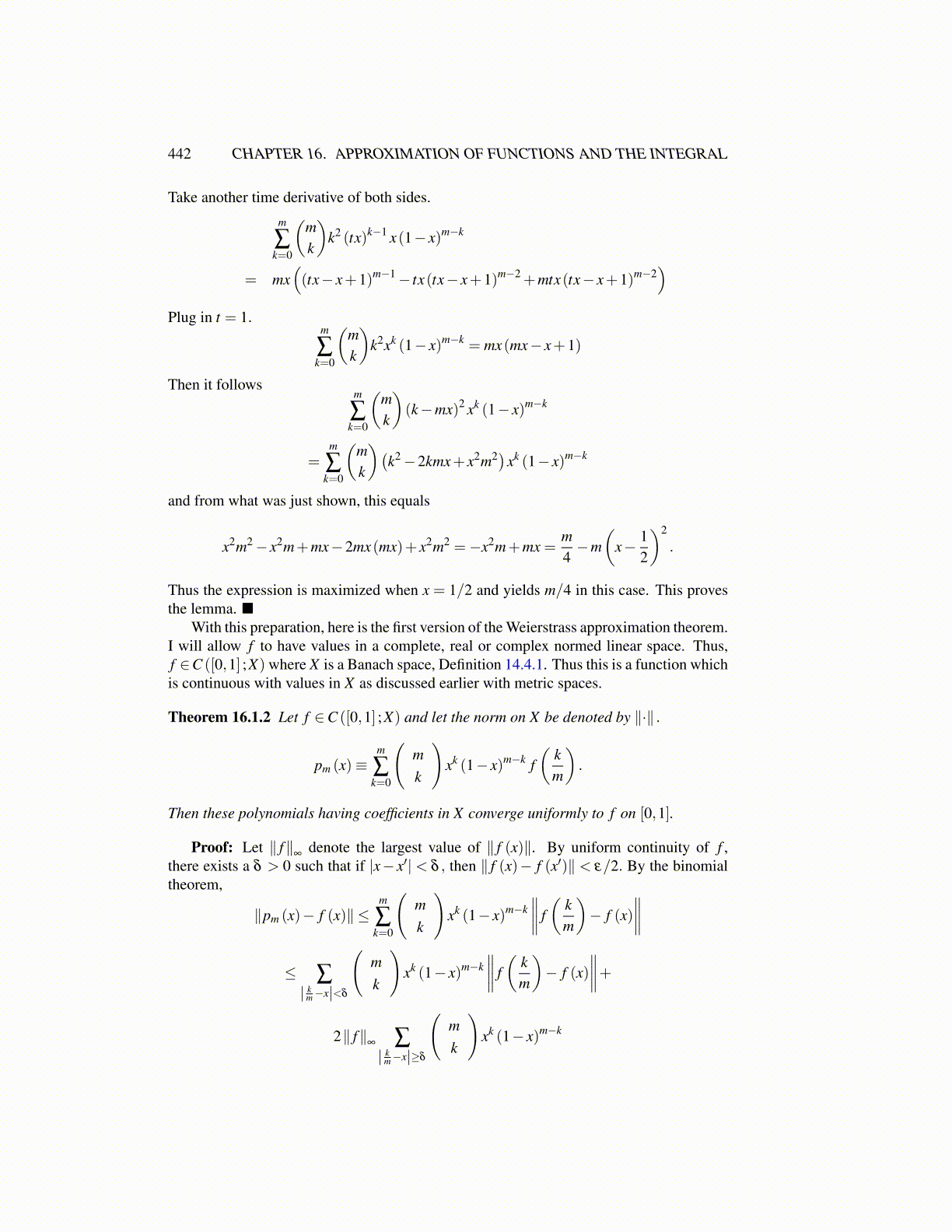
442 CHAPTER 16. APPROXIMATION OF FUNCTIONS AND THE INTEGRAL
Take another time derivative of both sides.
m
∑k=0
(mk
)k2 (tx)k−1 x(1− x)m−k
= mx((tx− x+1)m−1− tx(tx− x+1)m−2 +mtx(tx− x+1)m−2
)Plug in t = 1.
m
∑k=0
(mk
)k2xk (1− x)m−k = mx(mx− x+1)
Then it followsm
∑k=0
(mk
)(k−mx)2 xk (1− x)m−k
=m
∑k=0
(mk
)(k2−2kmx+ x2m2)xk (1− x)m−k
and from what was just shown, this equals
x2m2− x2m+mx−2mx(mx)+ x2m2 =−x2m+mx =m4−m
(x− 1
2
)2
.
Thus the expression is maximized when x = 1/2 and yields m/4 in this case. This provesthe lemma. ■
With this preparation, here is the first version of the Weierstrass approximation theorem.I will allow f to have values in a complete, real or complex normed linear space. Thus,f ∈C ([0,1] ;X) where X is a Banach space, Definition 14.4.1. Thus this is a function whichis continuous with values in X as discussed earlier with metric spaces.
Theorem 16.1.2 Let f ∈C ([0,1] ;X) and let the norm on X be denoted by ∥·∥ .
pm (x)≡m
∑k=0
(mk
)xk (1− x)m−k f
(km
).
Then these polynomials having coefficients in X converge uniformly to f on [0,1].
Proof: Let ∥ f∥∞
denote the largest value of ∥ f (x)∥. By uniform continuity of f ,there exists a δ > 0 such that if |x− x′| < δ , then ∥ f (x)− f (x′)∥ < ε/2. By the binomialtheorem,
∥pm (x)− f (x)∥ ≤m
∑k=0
(mk
)xk (1− x)m−k
∥∥∥∥ f(
km
)− f (x)
∥∥∥∥≤ ∑| k
m−x|<δ
(mk
)xk (1− x)m−k
∥∥∥∥ f(
km
)− f (x)
∥∥∥∥+2∥ f∥
∞ ∑| k
m−x|≥δ
(mk
)xk (1− x)m−k